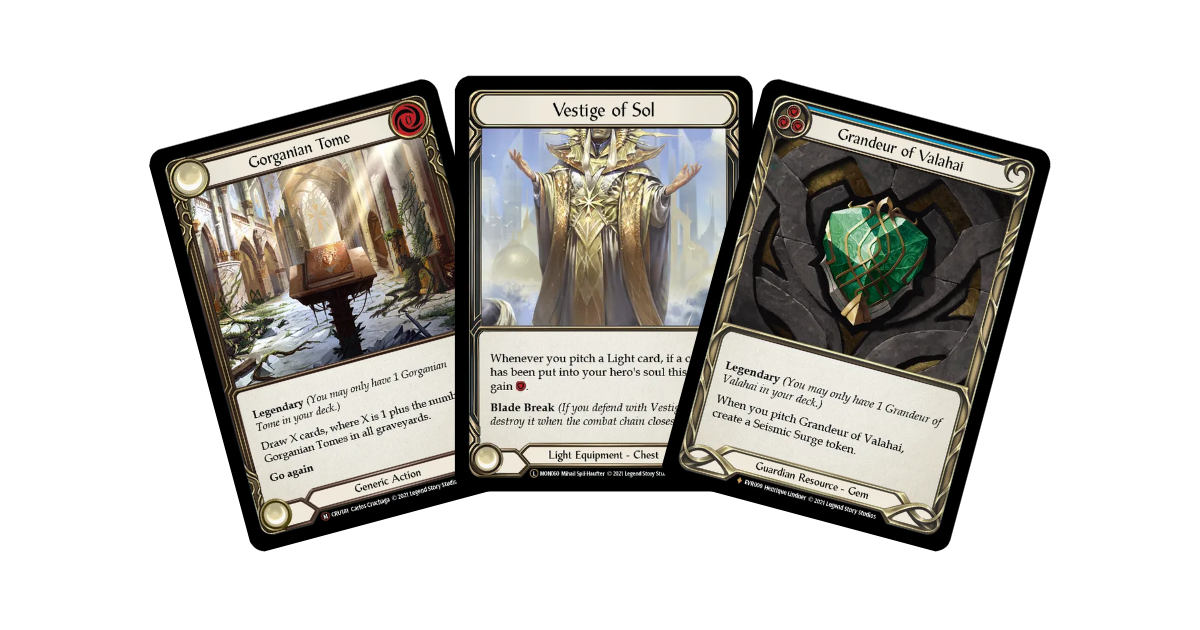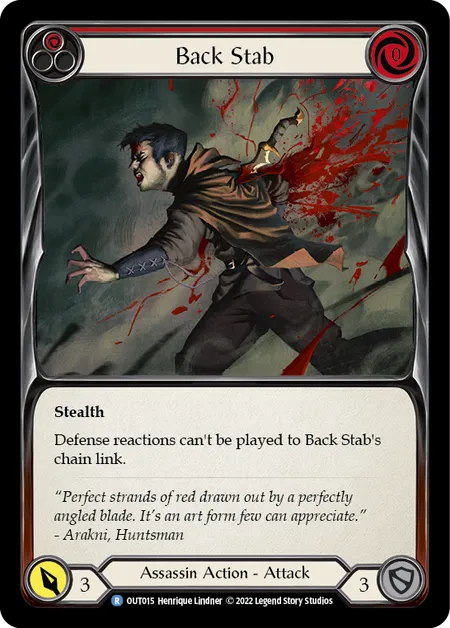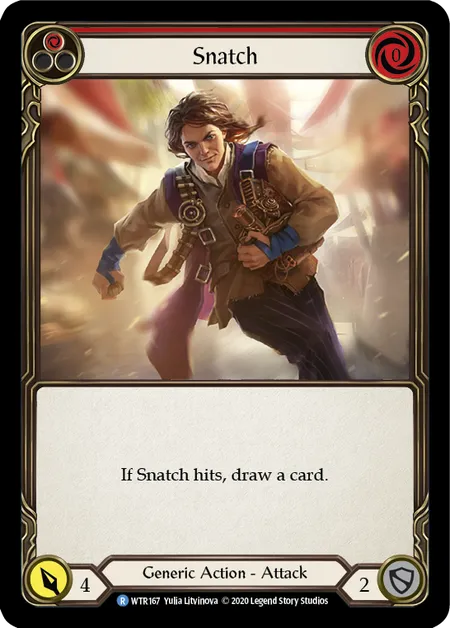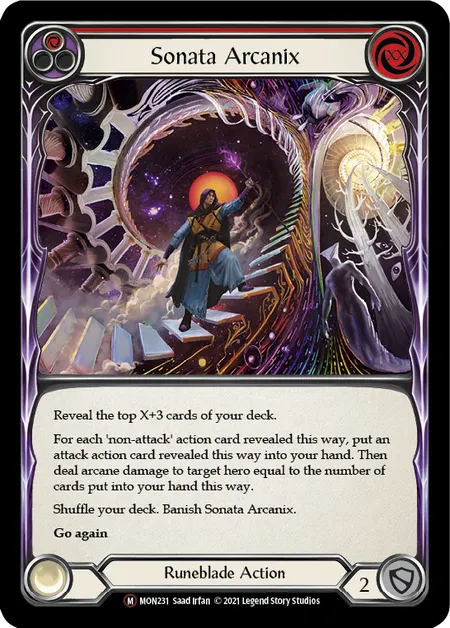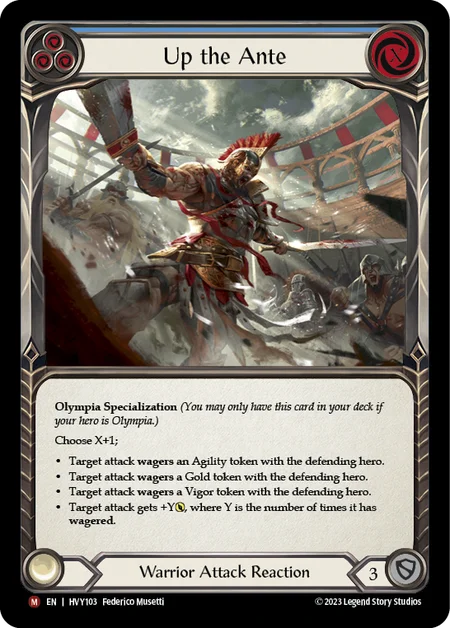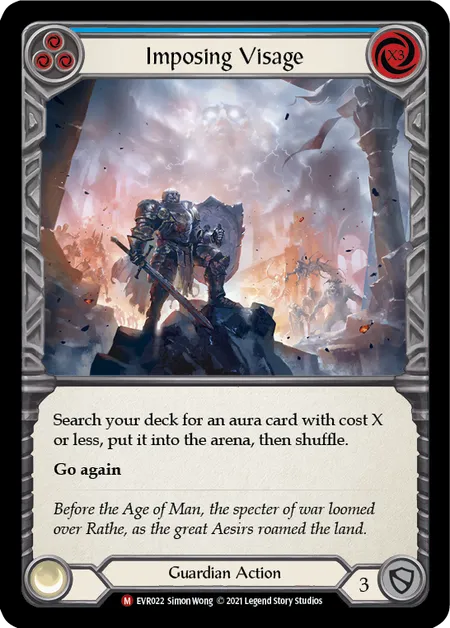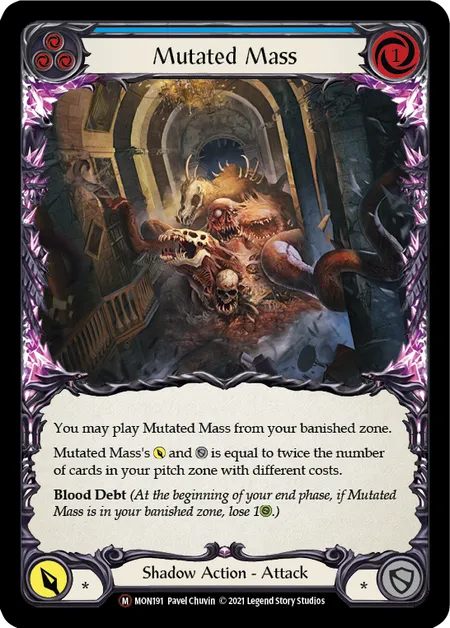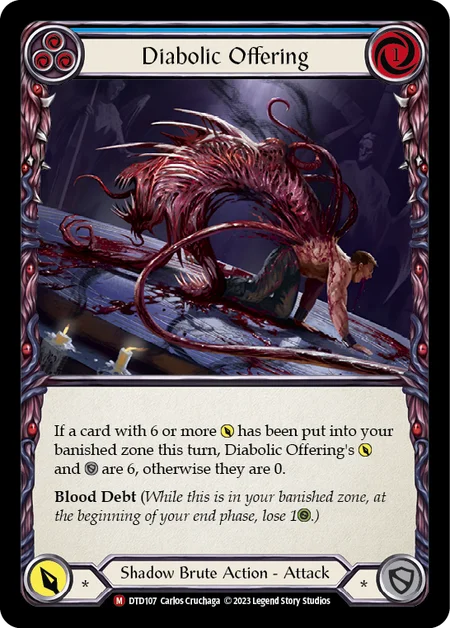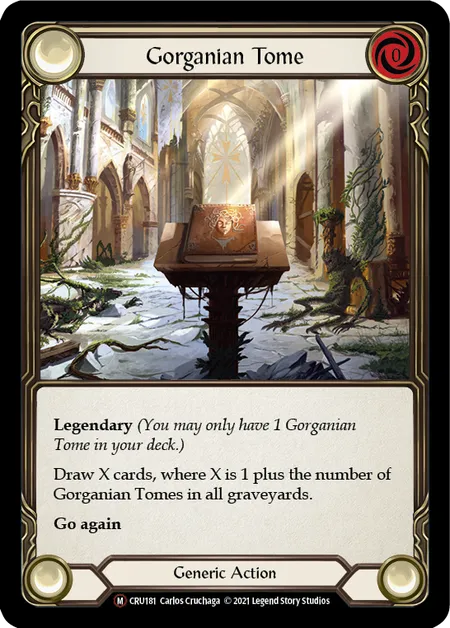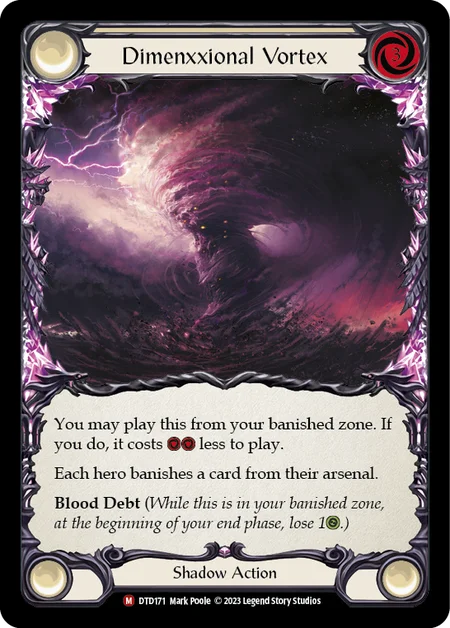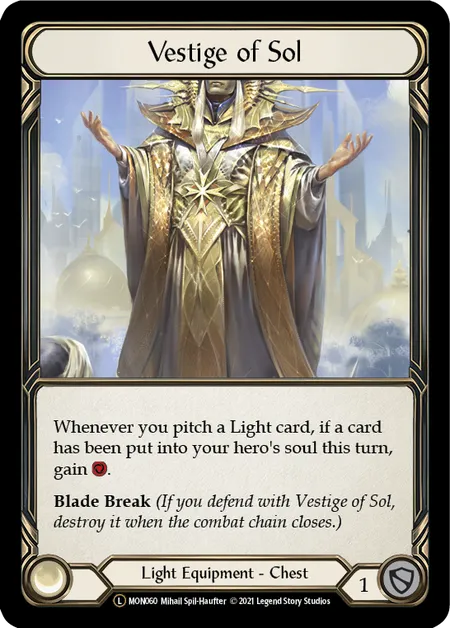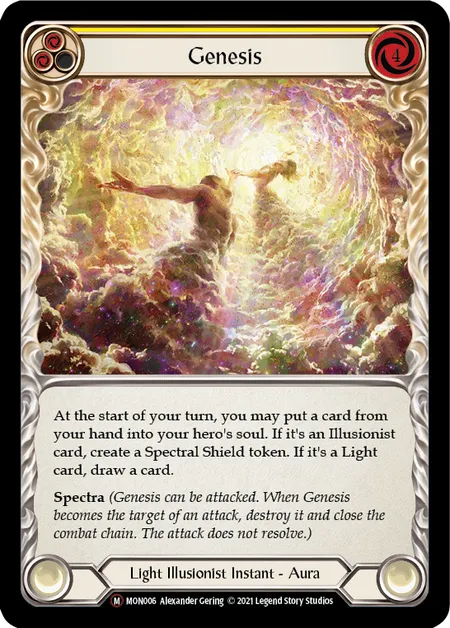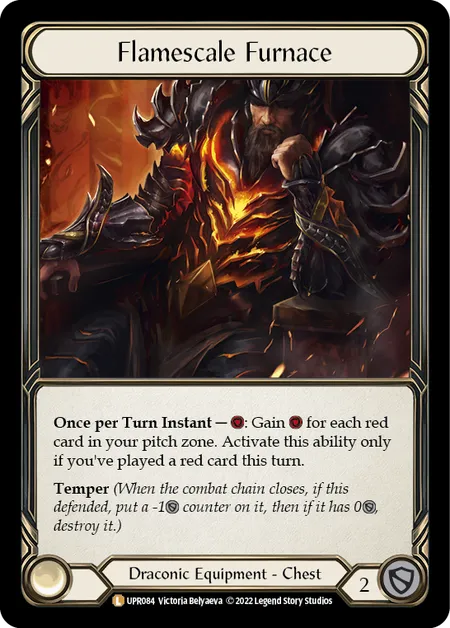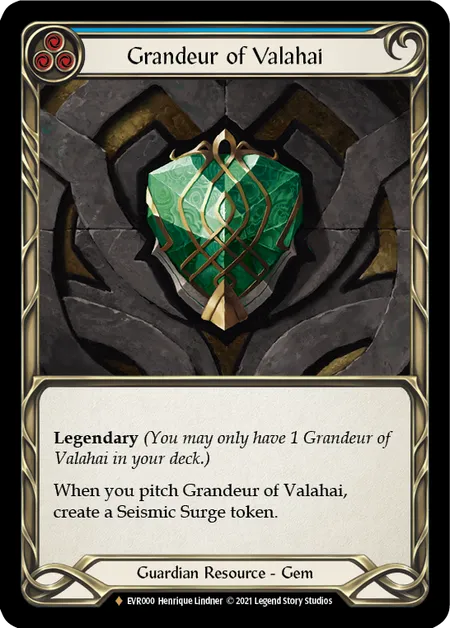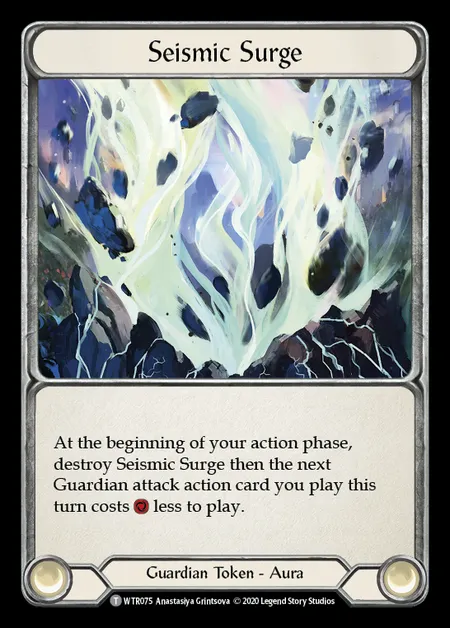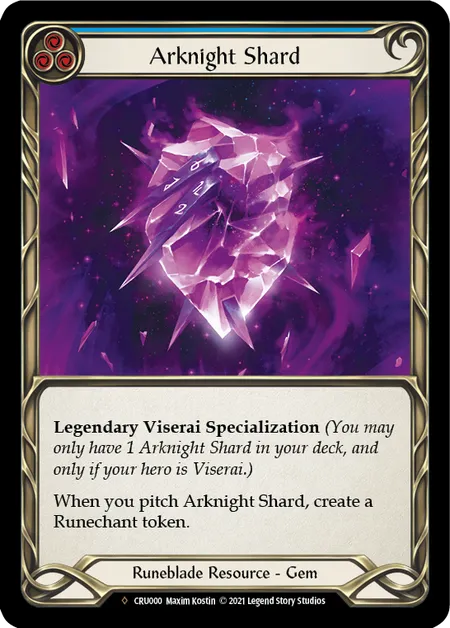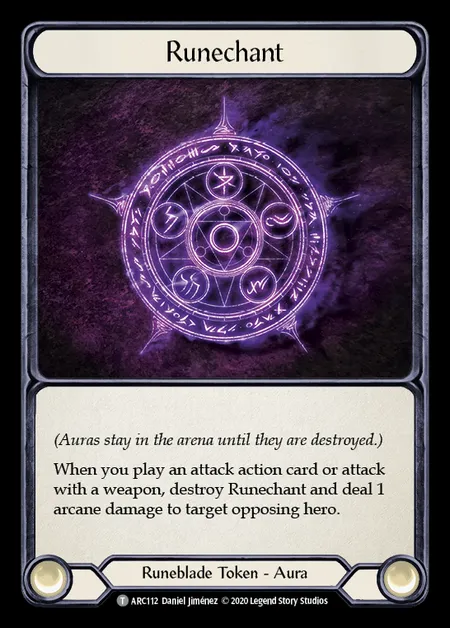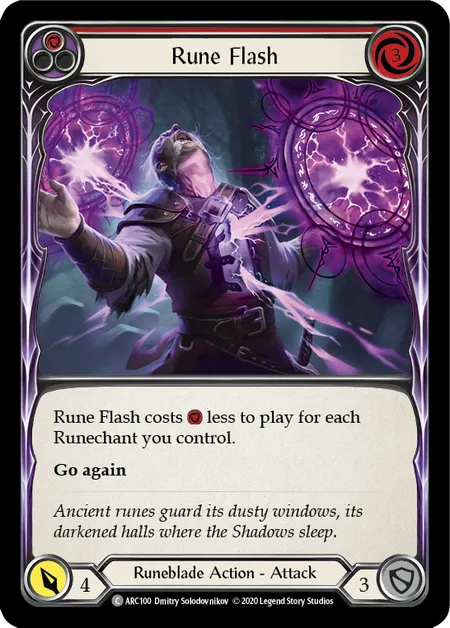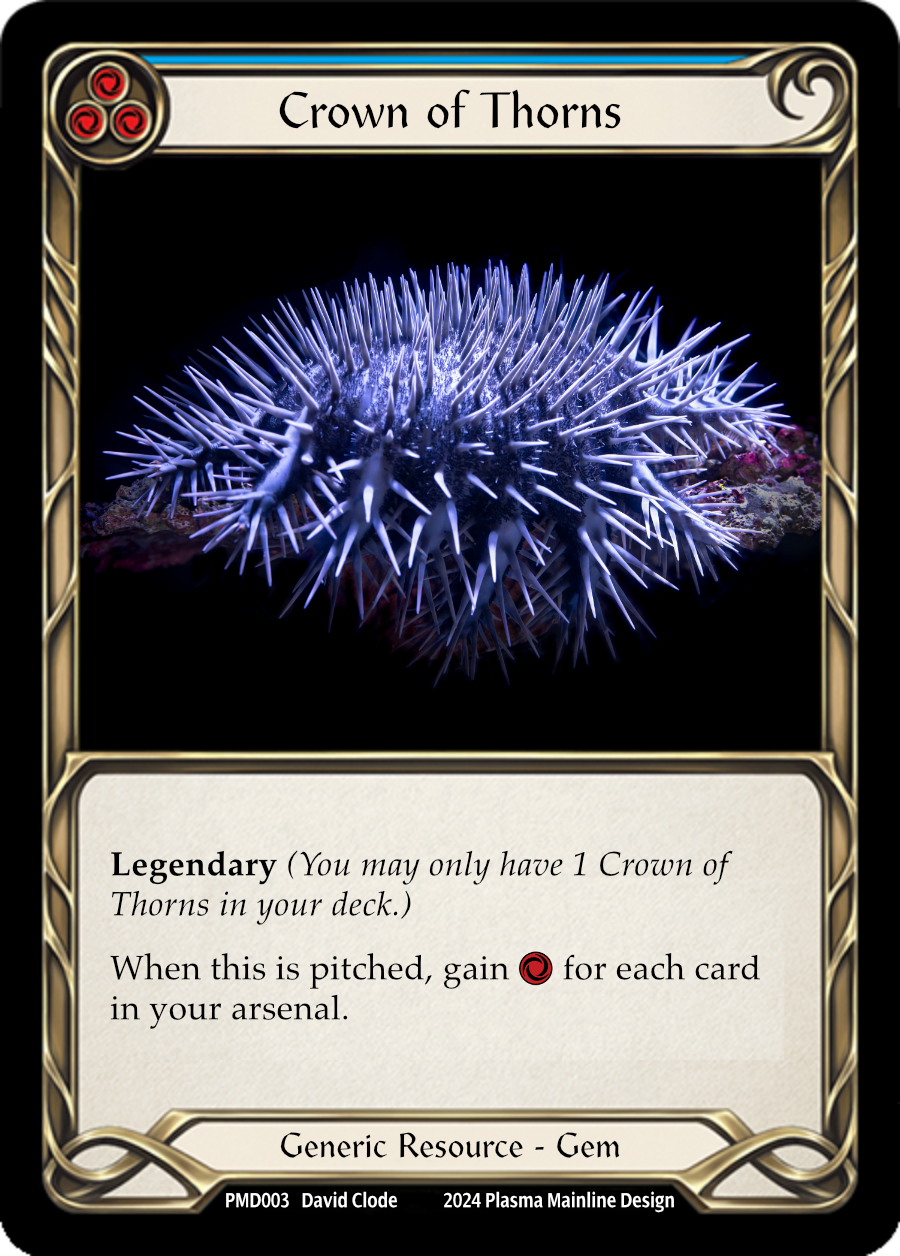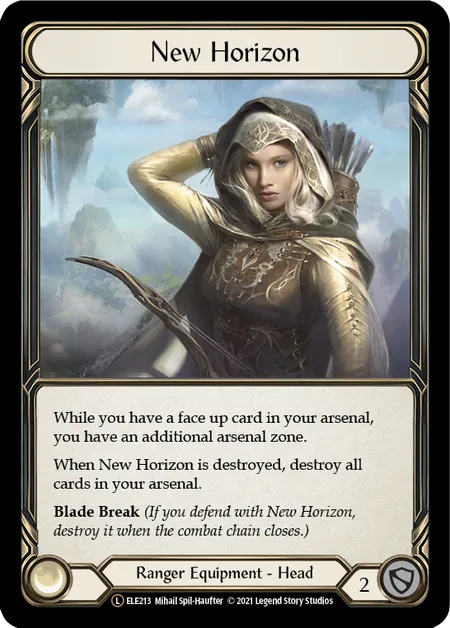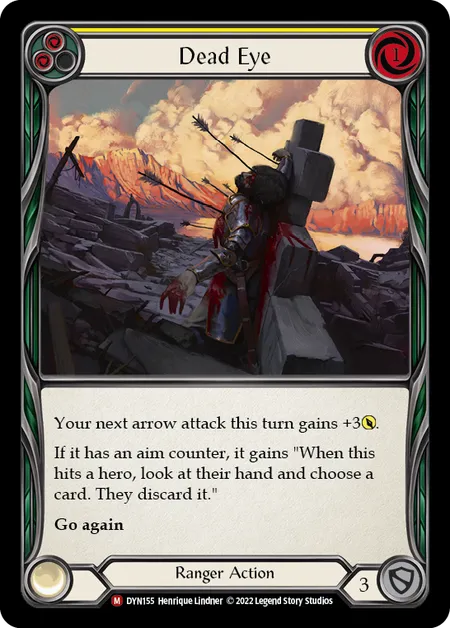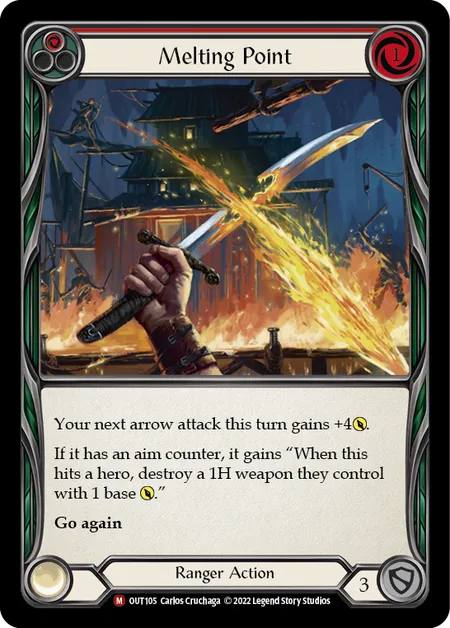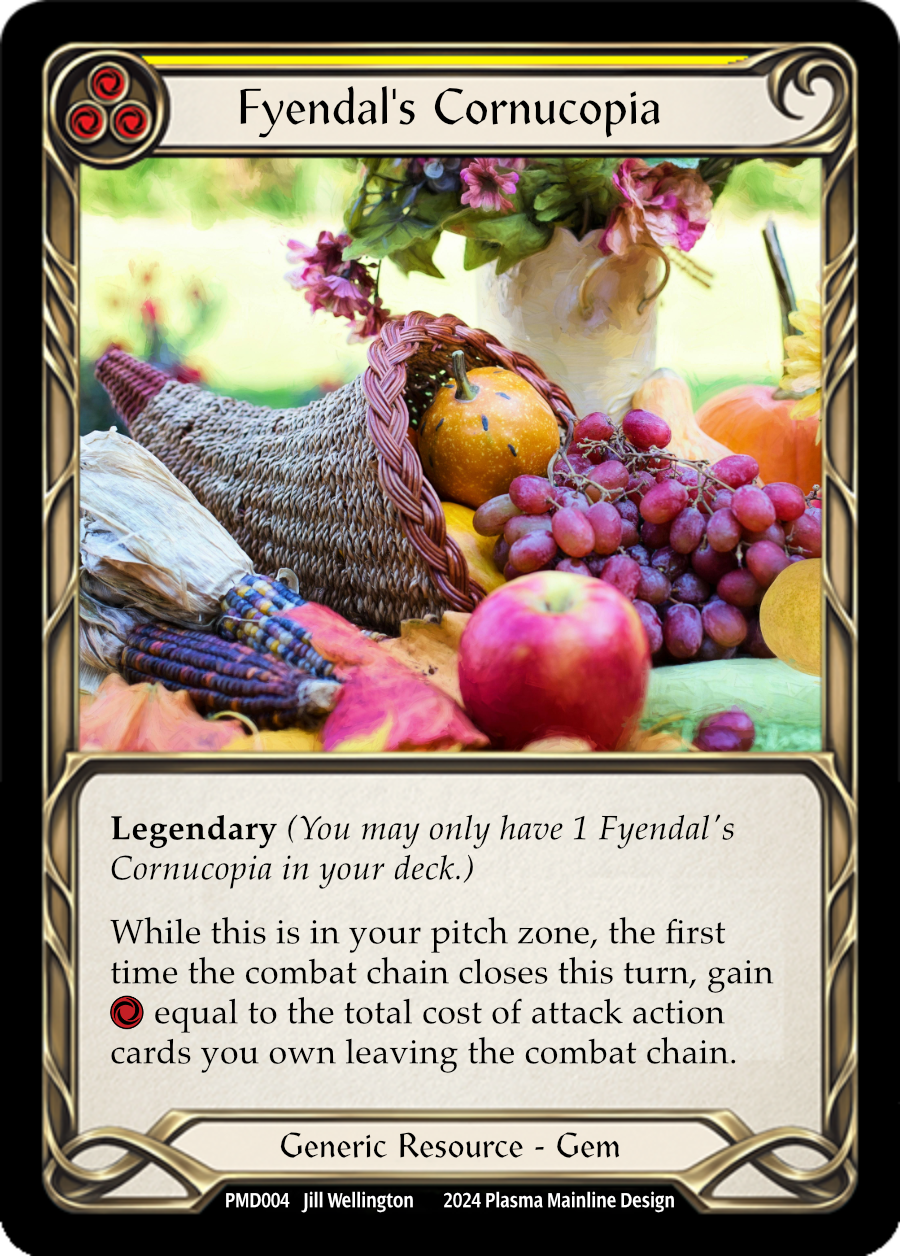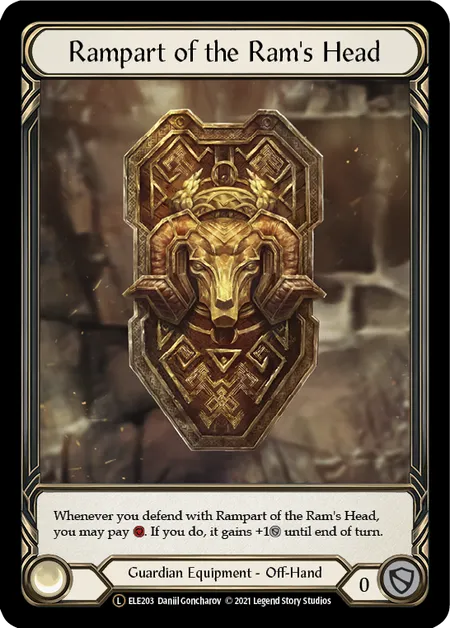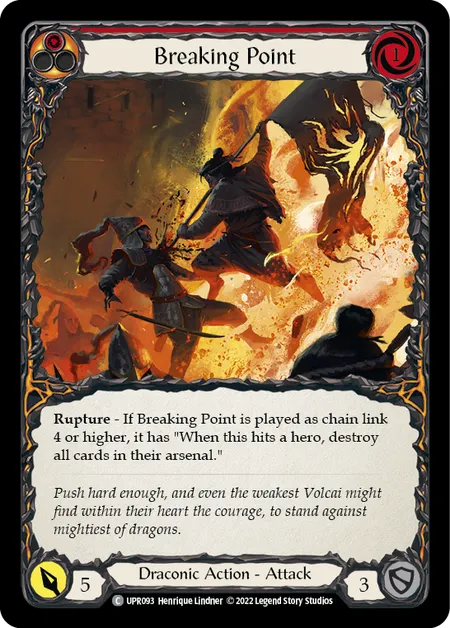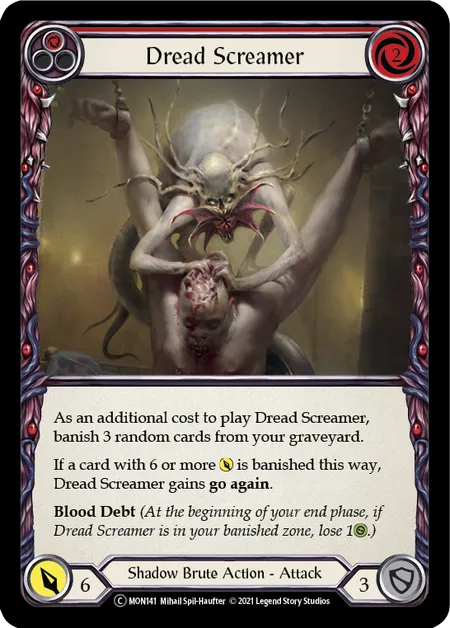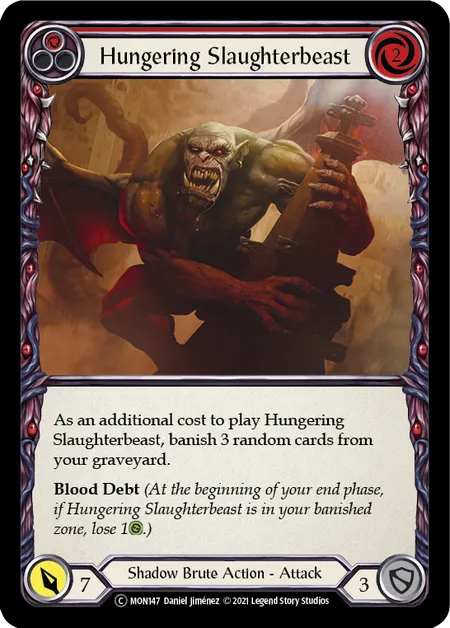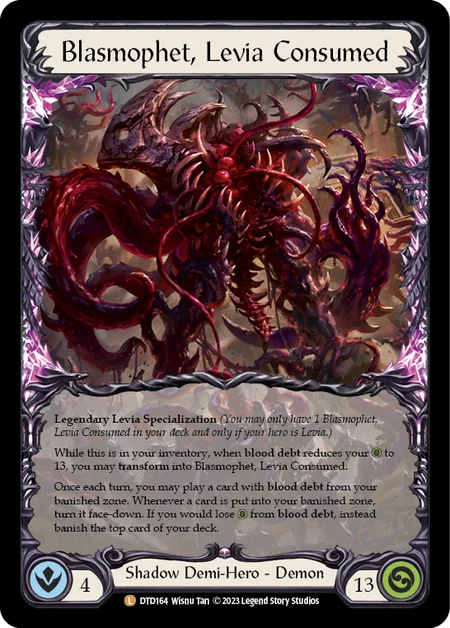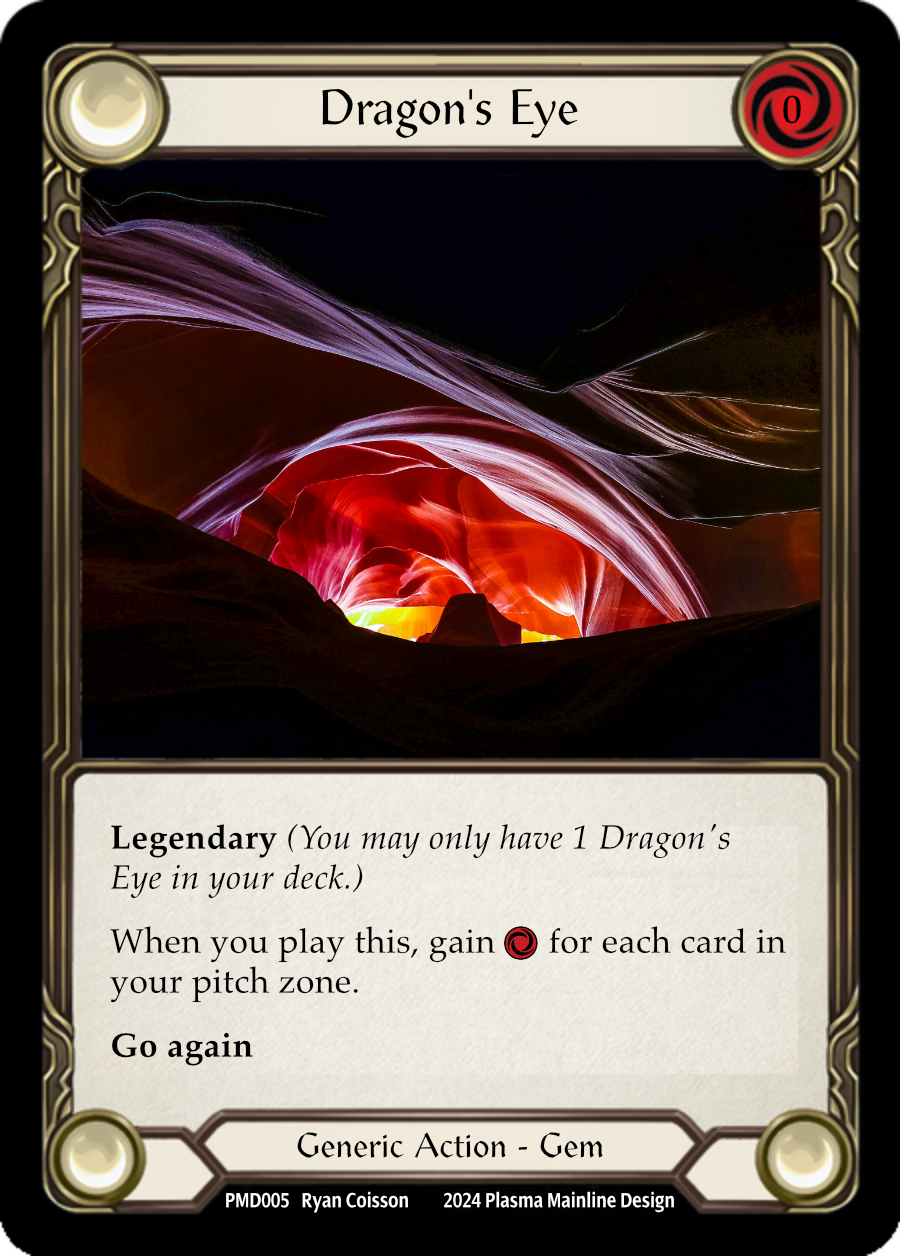Variable pitch values
Like in most card games, each card in Flesh and Blood features various numerical values: the cost to play the card, how many resources it generates when it is pitched, how much damage it can block, and, in the case of an attack, its power. Typically, a card blocks for 3 and pitches for 1 to 3 resources (red, yellow, blue), with a 0-cost attack action presenting 4 damage. In general, a 1-pitch (red) attack costs an additional resource for each point of damage beyond 4, with each additional point of pitch lowering the attack value by 1. However, various values are adjusted to account for further abilities or keywords on the card. Usually, this means that a card attacks for less, e.g. Stealth cards trade one point of damage for this keyword and another ability, or blocks for less, e.g. Snatch trades one point of defence for its on-hit effect. Occasionally though, cards are introduced that break the norm when it comes to values.
Outside of the norm
Throughout various sets now, cards can be found that do not adhere to this general framework of assigned values. Often, these cards reward certain play patterns or deckbuilding restrictions. Let us look at how the design space of flexible values has been explored so far.
Flexible cost
The first example is arguably the most powerful: flexible cost. Cards like Sonata Arcanix and Up the Ante offer the flexibility to play them without paying anything, defining a baseline, but their effects scale with how many resources you are willing to dump into them. This is great for decks that may have leftover resources because their play patterns require different amounts of resources, ensuring that nothing is wasted. Additionally, flexible costs can be used to appropriately cost fetching mechanics, like Imposing Visage.
Variable attack and defence
The second type of non-numerical value we have seen on cards is an asterisk instead of attack and defence values, namely on Mutated Mass and Diabolic Offering. In both cases, the value of the asterisk is specified in the text box. Though they use the same notation, I would argue that they occupy a different design space. In the case of Mutated Mass, the asterisk represents a number that scales with cards in your pitch zone with various costs, whereas the asterisk on Diabolic Offering is a static condition that checks whether a certain event has occurred during the turn. What they have in common though, is that they can effectively be “above rate”, i.e. the numbers break the formula outlined in the introduction of this article, as long as the condition in their text box is satisfied to a sufficient degree.
No pitch value
In the realm of pitch we have also seen cards that break the mold. Most notably, a few cards have appeared without any pitch value at all, limiting their usability. As non-attack actions, Gorganian Tome and Dimenxxional Vortex lack both pitch and defence values such that the only thing you can do with them is play them out! Whilst this is a severe limitation, this is just a more extreme example of how values can be adjusted to balance cards.
Pitching more than 3 (kind of)
As a final example, I would like to highlight creating more than 3 resources with a single card. The clearest example is of course Vestige of Sol. As long as a card has entered your soul this turn, your Light cards create an additional resource when pitched, turning blue cards into 4 resources! However, adding cards to your soul usually already requires resources (either literally or in the form of cards with the charge mechanic, Genesis being the notable exception), limiting your use for large amounts of resources beyond your initially committed cards. Similarly, it is in principle possible to generate a bunch of resources off of Flamescale Furnace, but this requires a heavy investment of pitched cards up front, and you only get so many cards each turn.
Beyond the Light and Draconic talents, we have seen two Fabled-rarity cards that create more than 3 resources, at least kind of. Grandeur of Valahai literally creates an extra resource in the form of a Seismic Surge token. However, this has the drawback that you only get the fourth resource on your next turn and can only spend it on Guardian attack actions.
The second Fabled that arguably produces an additional resource is Arknight Shard. Though a Runechant token does not specifically lower a cost like Seismic Surge does, several Runeblade cards are discounted for each Runechant you control, like Rune Flash. Hence, this card can effectively act as a 4-pitch card on your own turn!
Flexible pitch values
So where does this lead me? As we have explored, niche cards exist to create more than 3 resources, none of which have broken the meta so far. If the game can withstand the existence of these cards, I would like to see cards whose pitch value is influenced by the board state, like Mutated Mass’s attack and defence values, or is as flexible as Up the Ante. Since pitch cards cannot be held from turn to turn without giving yourself an effective intellect penalty, I believe these cards are compelling because including them in your deck requires you to commit to certain play patterns. In addition, historically power cards have been action or instant cards, but pitch cards can be power cards if they fuel an entire turn on their own. Let us look at some examples.
Arsenal interaction
Flesh and Blood’s rules state that each player has one arsenal zone that players can use to save a card for a future turn. Hence, having a card in your arsenal is a binary condition: it is either true or false. Therefore, a card could use this condition in much the same way as Diabolic Offering’s condition to award an extra resource if you have a card in arsenal. It might look like this:
If you have no cards in arsenal, you gain 3 resources. If you do have a card in arsenal, you gain a fourth resource. Whilst this may look rather innocuous at first glance, there are some subtleties here. If you are pitching this card and you want to get the extra resource, you cannot use this card to pay for your arsenal card, since you only pay for a card after declaring that you are playing it, at which point the card has already left your arsenal.
Where a card like this could truly shine though, is in a Ranger deck. Rangers have access to the New Horizon headpiece, potentially making this a whopping 5 resources, powering a pop-off turn all on its own! However, Rangers’ arrow cards have to be played from arsenal. This implies that they have to play a non-arrow, non-0 cost card from hand if they want to cash in on those resources, making 1-cost pumps like Dead Eye or Melting Point easier to incorporate in a turn before continuing play from arsenal.
(Clarification: Though the Gem subtype and border have only appeared at Fabled rarity, I am not suggesting printing powerful cards at this rarity. I would expect all examples here to fall in the Majestic or Legendary rarity level.)
Combat chain interaction
Another opportunity for interaction between resources and game state is of course the combat chain. A first idea may be to generate resources based on the length of the combat chain, but this could get out of hand quickly in the Ninja decks. Instead, I would like to focus on generating resources when the combat chain closes:
This design is interesting to me because most decks want to avoid closing the combat chain. The main reason for this is that equipment pieces go back to their zones when the chain closes, allowing your opponent to block with them again in the same turn. This can make your turn less impactful and potentially allows your opponent to get repeated value out of pieces like Rampart of the Ram’s Head. Additionally, there are cards that care about the length of the combat chain, like the Draconic cards with the Rupture keyword.
Where I think this card becomes interesting, is in decks that play a lot of 2-cost attacks. For example, consider Levia. Some of the best (Shadow) Brute cards cost 2 and pitching two cards to play two attacks is usually not all that impactful. However, if you were to play Dread Screamer, pitching Fyendal’s Cornucopia, you could close the chain and follow up with a Swing Big for an amazing 3-card, 14-damage play. Alternatively, if you are following this up with a card that has to banish from graveyard, like Hungering Slaughterbeast, breaking the combat chain may even be preferred to have a chance to banish the Dread Screamer and set up for the late game with Blasmophet, Levia Consumed.
Pitch zone interaction
To round out the examples and because many people seem to want Kano gone, here is a card that might just push him over the edge:
Of course, the similarity to Flamescale Furnace is immediately clear, except that this one does not care about which cards are in your pitch zone. On the other hand, this one also does not start on the board and cannot be pitched into the pitch stack or blocked with. Nevertheless, during Kano’s kill turn, Kano players can end up with quite a few cards in their pitch zone, and playing this at instant speed with Kano’s ability probably results in a net gain of resources to squeeze out the last few points of damage they need.
Conclusion
As demonstrated in this article, the game state of Flesh and Blood offers many, many aspects that cards can interact with. Cards that interact with the game state have already been printed, but I would like to see more cards that do this, especially in regards to their pitch value. If you have the intention to pitch a card, you cannot hold onto it because you cannot pitch from arsenal. At the same time, pitch values based on the game state push players to unique play patterns that they would otherwise not consider.
If you enjoyed this article, please share it with others, and if you have any feedback, please leave a comment below or contact me on social media.
